16 Effective Advertising Strategies for Business Growth (With Examples)
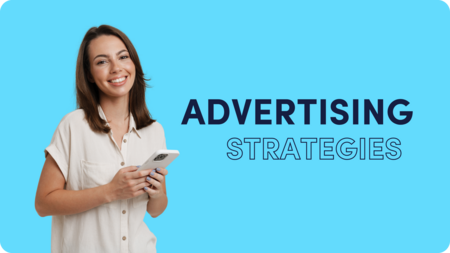
Smart and strategic advertising can make your brand unforgettable. Think of how McDonald’s is often the first thing you imagine when you want a burger – that’s the power of strategic, repeated ads across billboards, TV, social media, and more. Their approach builds familiarity and loyalty by staying visible everywhere.
Your brand can do the same!
In this post, we’ll dive into top advertising strategies with examples to help you create a plan that elevates your brand. Let’s start with the basics.
What is an Advertising Strategy?
An advertising strategy is your plan to promote your products to the right people. It helps you decide where to spend your budget, which channels to use, and what message to share.
Advertising is part of marketing but focuses on communicating with potential customers to grow sales and loyalty.
Here are the basics of a good advertising strategy:
- Your product’s story: Show how your product solves a problem and makes life better.
- Knowing your customer: Understand their needs and speak their language.
- Getting your message out: Find the best ways to reach your audience, like social media or email.
- Smart spending: Use your budget wisely to get the most impact.
16 Types of Advertising Strategies That Drive Results
If you want the best ROI, you need to pick the right advertising strategy at the right time. Each strategy serves a unique purpose and helps you connect to your audience in different ways. Some of them can lead to instant sales while others help in building long-term loyalty.
In this section, we’ll explore 16 different advertising strategies that cover short-term and long-term growth.
Content-Driven Advertising Strategies
Content-driven approaches help you connect with your audience in a way that feels natural and engaging. Instead of pushing products directly, you share valuable content that draws people in.
This builds trust and loyalty over time, leading to meaningful relationships and, eventually, profits. The goal is to keep your brand at the top of your mind without being too obvious.
1. Content advertising
This advertising strategy aims to place your ads inside the content people already enjoy. It might be a sponsored blog post, a mention in a listicle, or a branded video.
The best part is that you can use content advertising at every stage of the marketing funnel, starting with educating your audience and then guiding them toward conversion.
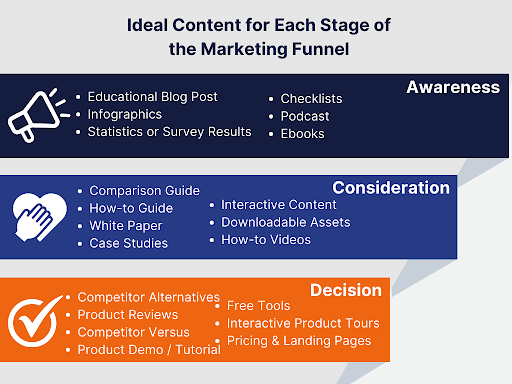
It also works well across various sectors, whether you’re in retail, law, healthcare, or tech. By providing valuable information that addresses your audience’s needs, you build trust and position your brand as a go-to resource.
“Our blog breaks down complex legal situations into real-world examples that people can actually understand. We’ve had many clients come in after reading our posts, already understanding the basics of their case. They tell us our blog made them feel comfortable because we simplified legal concepts.”
Matthew Clark, The Clark Law Office
2. Native advertising
Native ads feel like part of the platform, blending in with other posts or articles. They could show up in a news feed or as a promoted blog. These ads don’t interrupt; they fit right in.

Even with a “sponsored” or “ad” label, they still feel organic because they match the host site’s format and writing style. So, they counter against ad fatigue and engage audiences without being intrusive.
3. Podcast advertising
Podcast advertising lets you reach listeners through audio spots on their favorite shows. In the United States, podcast advertising made over $1.9 billion in revenue in 2023, and experts expect podcast ad revenue to keep growing, reaching $2.6 billion by 2026.
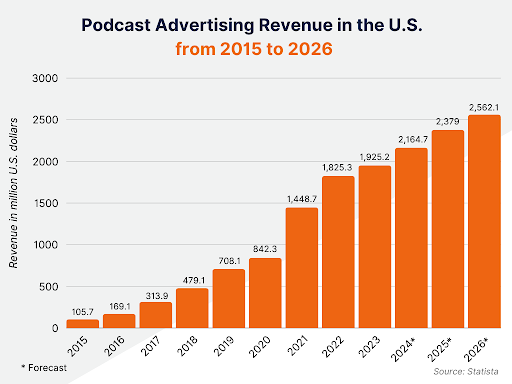
These ads run for 30-60 seconds and can play at the start, middle, or end of episodes. The best spots are when podcast hosts personally read your message.
This works because podcast listeners pay close attention and trust their favorite hosts. They rarely skip ads, unlike in other media.
While it’s harder to track ROI than digital ads, you can use special discount codes to measure success.
4. Branded entertainment
You create entertaining content that people want to watch. Then you weave your brand naturally into that content. This could be a video series, a movie, or an online game.
Instead of showing regular ads, you tell stories that feature your products. The best example is Red Bull. They create exciting videos about extreme sports, racing, and adventure. While these videos rarely show their energy drinks directly, they connect Red Bull with excitement and thrilling experiences.

Branded entertainment is best for companies with bigger budgets who want to build long-lasting customer loyalty. It takes more time and money than regular ads, but can create stronger connections with your audience.
Customer Attraction-Based Advertising Strategies
Your business needs new customers to grow bigger and do better. You want people who’ve never heard of your business to find out how great your products or services are.
These methods work best when you’re just starting out, moving to new areas, or see that not enough new people are finding your business lately.
5. Pull advertising
Pull Advertising lets customers find you naturally when they’re looking for solutions. Instead of pushing ads at them, you create helpful content that attracts them to your business.
Basically, you position your business as a trusted expert through:
- Useful content
- SEO-optimized websites
When people search for answers or recommendations, they find your content first. For example, a cooking website might share free recipes that rank well on Google, eventually leading readers to buy the cookbook.
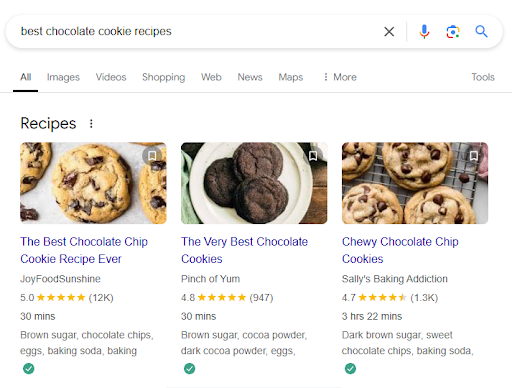
This method works best when providing valuable information or solving specific problems. It’s ideal for experts, consultants, and companies with educational content. While it takes longer than paid ads, it often brings better long-term results and builds stronger customer relationships.
6. Paid search advertising
Paid Search Advertising shows your ads to people when they search for specific keywords on Google or other search engines. You bid on relevant keywords, and your ad appears at the top of search results marked as “Sponsored” or “Ad.”
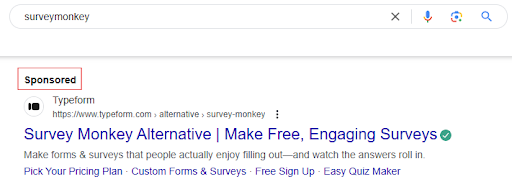
It is an ad that only shows up when someone is actively looking for what you offer. If someone searches “best running shoes,” a sports store’s ad appears right away.
The biggest benefit of paid search advertising is that you pay only when someone clicks your ad.
This method works best when you want immediate visibility and have a clear offer. It’s perfect for local businesses, e-commerce stores, and service providers who need quick results.
7. Social media ads
Social media ads let you connect with people where they spend their time online, appearing in feeds on platforms like Facebook, Instagram, TikTok, and Twitter as images, videos, or stories.
Their strength lies in precise targeting – you can tailor ads for specific groups based on age, interests, and location. For instance, a skincare might target women aged 25-34 who follow beauty accounts. These ads blend into users’ feeds, making them less intrusive than traditional ads.
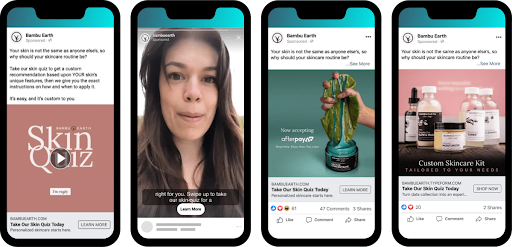
You control your budget and only pay when someone interacts with your ad. To maximize results, start with a small budget, test different formats, and adjust based on what works best.
8. Influencer partnerships
Influencer partnerships allow you to showcase your products to loyal fans in engaging ways. Creators can film honest reviews of your skincare line, host giveaways for your new product, or share exclusive discount codes with their followers.
When followers see their favorite creators genuinely using and recommending your product, it feels like advice from a trusted friend. These authentic recommendations often work better than traditional ads because people trust real experiences more than polished marketing messages.
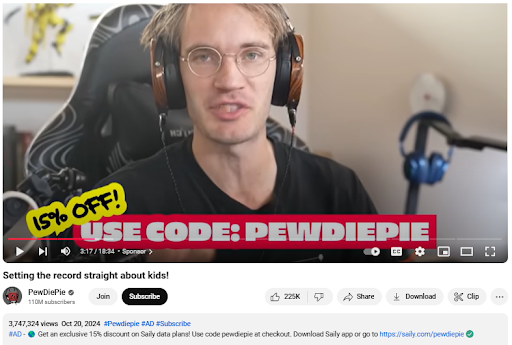
This approach is particularly effective for brands in fashion, beauty, lifestyle, or tech. While larger influencers can be expensive, starting with micro-influencers – who have smaller but more engaged audiences – can lead to better results for your brand.
Direct Outreach Advertising Strategies
Direct outreach tactics let you take the first step in connecting with potential customers. You initiate the conversation through ads, emails, and reminders, rather than waiting for them to find you.
9. Push advertising
Push advertising delivers promotional messages directly to users through notifications on their devices, even when they’re not actively browsing. These notifications appear on mobile phones, desktops, or tablets, creating immediate visibility for brands.
This approach is effective for announcing exciting news, like a new product launch or a big sale, as it captures immediate interest. Just make sure to offer something valuable, like an enticing discount or useful information, since you’re interrupting their browsing experience.
Travel companies like Expedia use push notifications to alert users about price drops on flights they’ve searched for or last-minute hotel deals in their favorite destinations.

Similarly, e-commerce brands like Sephora send personalized notifications about restocked items or flash sales, timed to when users typically shop. News apps send push notifications to share breaking news, which helps bring traffic to their platforms quickly.
This strategy works best when the notifications are relevant and timely.
But it’s important to respect user preferences. If notifications are too frequent or not useful, people may opt-out. However, personalized messages sent at the right time can increase engagement and drive sales.
10. Email advertising
Email advertising helps you grow your business by sending messages to customers who’ve agreed to hear from you. It is still effective because it reaches people who have opted in.
It helps you stay connected with current customers and attract new ones. You can share regular updates, send special offers, and highlight new products or services.
By keeping your messages relevant and personal, you remind customers of your value and encourage them to keep coming back.
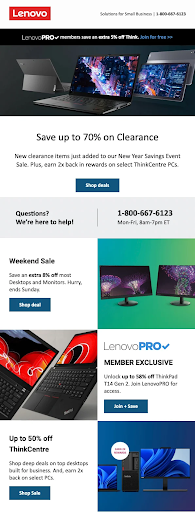
In fact, this advertising strategy has one of the highest ROI – you can get $36 for every $1 you spend.
Here’s what you need for a good email strategy:
- A list of customer email addresses
- Messages personalized for different groups
- Automated emails sent at the right time
- Tools to track how well your emails are working
- Clear calls to action that encourage purchases
This approach is great for online stores, local businesses, or service providers. It’s a budget-friendly way to stay connected with customers and boost sales, whether you’re just starting out or already well-established.
Plus, you can also use this advertising strategy to keep your customers engaged and build a sense of community around your brand. By consistently delivering valuable content and encouraging interaction, you create a space where customers feel connected not just to your products but also to each other.
“Our weekly newsletter delivers focused insights from industry mentors about skill development, business growth, and career advancement. We keep it simple – one email packed with practical wisdom from people who’ve been there. It’s grown to over 40,000 readers because we focus on value, not volume.”
Dominic Monn, Founder of MentorCruise
11. Cold calling
Cold calling involves reaching out to potential customers who haven’t shown interest in your product. Sales teams proactively contact decision-makers to start conversations.
This works well in industries with complex, high-value products, like fintech or SaaS. By researching prospects and tailoring pitches, companies can connect with decision-makers who value direct, solution-focused discussions.
Engagement and Loyalty Building Advertising Strategies
Keeping existing customers costs less than finding new ones. You need loyalty strategies when you notice customers starting to shop around or competition increasing. Start building loyalty early – as soon as you have regular customers who could easily switch to competitors.
12. Retargeting campaigns
Retargeting campaigns show ads to people who’ve visited your website or shown interest in your business.
By adding a tracking code (pixel), you can target users based on their actions, reminding them of products they viewed or left in their cart. You can also provide social proof or highlight achievements to win the trust and drive users to take action.
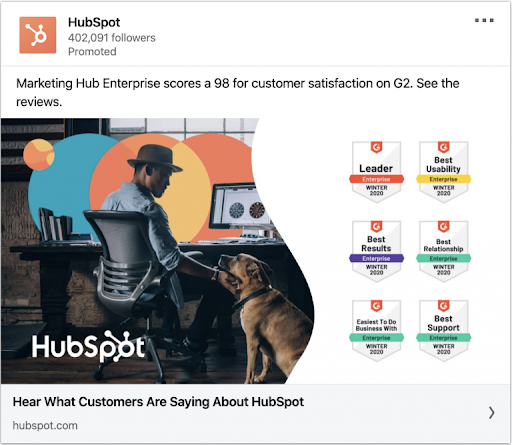
These ads appear across other websites and social media, reinforcing your brand and capturing attention when customers are ready to buy.
13. Loyalty programs
You can keep your best customers coming back by rewarding them with a loyalty program, like Starbucks Rewards. This shows that you value their business and offer special perks, like free items or early access to sales.

When customers feel like VIPs, they tend to spend more and share your brand with friends. It’s all about building a community of supporters who choose your business because they know you appreciate them.
14. Promotions and giveaways
You can attract attention and boost sales by offering special deals that make customers feel like they’re getting extra value.
Whether you’re running a flash sale, giving away samples, or offering buy-one-get-one deals, these promotions create excitement and urgency to buy. It’s like giving customers a pleasant surprise that makes their day better.
Your promotions might include limited-time discounts, contest prizes, or free gifts with purchase. When you make these offers truly valuable, customers are more likely to try your products and tell others about the deal.
15. Guerrilla advertising
When regular advertising feels ordinary, you can stand out by surprising people in creative ways. Instead of typical ads, consider turning a city wall into a mural or creating a memorable experience in public spaces.

The best campaigns make people stop, smile, and share. By crafting something unique – like an interactive storefront or entertaining display – you give people a reason to talk about it. The key is to be genuinely surprising and provide shareable moments.
16. Community events
You can foster real connections with customers by hosting events that bring people together. Whether it’s a local fair, workshops, or neighborhood cleanups, these gatherings show you care about building a community of like-minded people.

By meeting customers face-to-face, you learn what matters to them and can teach helpful skills or provide entertainment. These personal interactions build trust and make people feel good about supporting your business, creating a friendly space where customers become part of your business family.
Why Advertising Strategies Matter
Good advertising helps your business succeed by reaching the right customers and increasing sales. Without a clear plan, even your best products might get lost in today’s crowded marketplace.
Your advertising strategy gives you:
- Clear direction on where to spend your money
- Ways to measure what’s working
- Methods to stand out from competitors
- Tools to build customer trust
- Plans for growth over time
A strategy is your big-picture roadmap, while a marketing plan covers daily details. Think of strategy as choosing to focus on Instagram for young customers, while your plan includes specific post ideas and timing.
Most businesses fail without good advertising because customers simply don’t know they exist. Good strategies help you connect with customers who are interested in what you sell.
How to Build an Advertising Strategy
Now that you know different advertising strategies and why they’re important, let’s talk about how you can build one for your brand. Here’s a step-by-step guide you can follow:
Step 1: Know your customer inside out
Start by becoming an expert on your target customers. You need to dig deep into their daily lives, problems, and shopping habits, and use this knowledge to create accurate buyer personas. Think of this as creating a clear picture of the exact person who will buy from you. The better you understand them, the more likely your advertising will catch their attention and convince them to buy.
Here are a few ways to get to know your customers better:
- Run customer surveys to learn their needs
- Watch their social media activity and comments
- Track when and where they prefer to shop
- Study which competitors they follow
- Document their biggest challenges
- Learn their typical spending habits
- Create multiple buyer personas
“We started with free B2B persona templates to create profiles tailored to our business needs. These templates work well for most B2B situations, and they’re easy to adjust. For small businesses with limited budgets, using these kinds of free resources can be an efficient way to develop user personas.”
Gianluca Ferrugia, managing director at DesignRush
Step 2: Set clear targets
Your next step is creating goals you can actually measure. Skip vague goals like “get more sales” and instead pick specific numbers to track. This helps you know exactly when your advertising is working and when it needs changes.
Examples of specific goals include:
- Increase store visits by X% each month
- Grow email list to X subscribers
- Generate X qualified leads monthly
These specific targets help you choose the right advertising channels and measure ROI effectively. By tracking actual numbers against these goals, you can quickly adjust strategies that aren’t performing and double down on what works.
Remember to set both short-term targets (monthly metrics) and long-term objectives (annual growth goals) to maintain steady progress while working toward bigger milestones.
Step 3: Choose your methods now
Once you know your audience and goals, consider your budget. Some strategies, like social media ads, may be cost-effective for small businesses, while others, like TV commercials, require more investment. Evaluate what you can afford and what will give you the best return on investment.
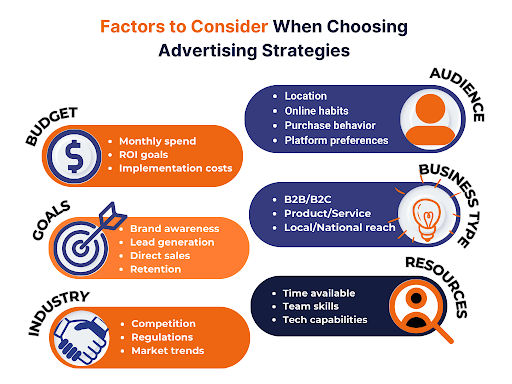
Another important factor is the type of product or service you’re offering. Some strategies work better for certain industries. For example, visual products like fashion or food may benefit from platforms like Instagram, while B2B services might find success on LinkedIn.
When picking marketing channels, we tell businesses to think about how their clients naturally look for their services.
At Hennessey Digital, we see how potential clients search for attorneys – they’re reading blogs about their specific situation, checking reviews, and asking for recommendations on professional networks. So that’s exactly where we focus our clients’ marketing efforts.
It’s not about jumping on every platform. You need to focus your efforts on being present where your customers are already looking for help.
Step 4: Track and improve
The advertising landscape is always changing. Be ready to adapt your strategy based on what works and what doesn’t. Test different approaches, analyze results, and make changes as needed. Start small with each new method and keep detailed records of what works.
Remember, good strategies help your business grow. Keep testing new ideas while maintaining what works best for you.
5 Successful Advertising Strategies Examples to Take Inspiration From
Before you start working on your advertising strategy, check out these examples to spark some inspiration. They show how brands have effectively captured attention and connected with their audiences in creative ways.
HubSpot
HubSpot grew its business through its comprehensive marketing blog and educational resources. Their free courses, certifications, and in-depth guides about digital marketing established them as the go-to authority in inbound marketing, naturally leading businesses to choose their software platform.
HelloFresh
HelloFresh took a new approach to meal kit marketing by keeping podcast ads real and relatable. Instead of sticking to a script, they let podcast hosts share their own stories about cooking HelloFresh meals at home. So, hosts talk about how it helped them tackle dinner without resorting to takeout or even introducing them to new ingredients.

Each podcast gets a unique discount code, making it easy for listeners to give HelloFresh a shot. That mix of real-life storytelling and a little incentive builds trust, especially with listeners who count on honest recommendations from their favorite hosts.
Glossier
Glossier grew its beauty brand by teaming up with micro-influencers and everyday customers instead of big-name celebrities. They showed off real people’s skincare routines and makeup looks, building an authentic community that loved their minimalist approach to beauty.

This made their products feel relatable and super desirable, especially among millennials who were looking for something real and down-to-earth.
Duolingo
Duolingo really nailed re-engagement emails with their fun and a little guilt-trippy messages featuring that cute owl mascot. They send clever reminders about lessons you’ve missed, and they throw in some encouraging updates about your progress and streaks.

It’s like they have this unique voice that makes you actually look forward to seeing their emails pop up in your inbox. Instead of feeling pressured, it feels more like a friendly nudge, and it definitely helps keep users engaged instead of drifting away.
Jacquemus
Jacquemus recently created a buzz with a viral Instagram video featuring oversized versions of their Le Bambino bags in bold colors rolling through the streets of Paris. Known for tiny bags, this surprising twist captivated viewers.
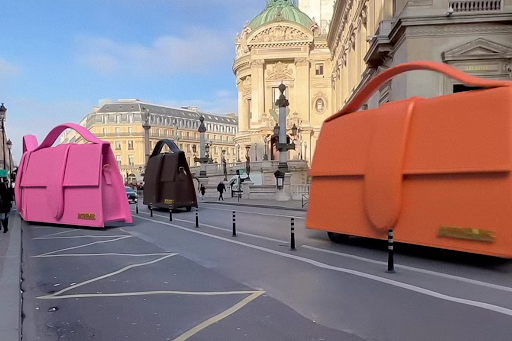
While many thought the bags were real, they were later revealed to be 3D renderings. This clever campaign turned heads and had fans buzzing about Jacquemus’s unique style.
Conclusion
In this blog, we explored 16 effective advertising strategies to help your business stand out. Now that you have the key points, it’s time to put them into action.
Start by assessing your current advertising efforts and see where you can apply these strategies. Experiment with different approaches, track your results, and adjust your plans based on what works best.
Don’t forget to keep your audience at the center of your advertising efforts. Engaging with them can lead to more effective ads that resonate and drive results. With these steps, you’ll be well on your way to creating successful advertising campaigns that boost your brand!
FAQ
Marketing strategies vs. advertising strategies?
Marketing strategies focus on understanding customers and creating value, while advertising strategies are about promoting products through ads. Both work together to attract and keep customers.
What are the four main marketing strategies?
The four main marketing strategies or the 4 P’s of marketing are product, price, place, and promotion. They help businesses decide how to sell their products and reach customers effectively.
What are the 7 Cs of advertising?
The 7 Cs of advertising are clarity, consistency, creativity, credibility, competitiveness, connection, and content. These elements help make ads more effective and appealing to customers.
What are the 6 Ms of advertising?
The 6 Ms of advertising are mission, money, message, media, measurement, and market. These factors guide businesses in planning and creating successful advertising campaigns.
What are the 6 Ps of advertising?
The 6 Ps of advertising are product, price, place, promotion, people, and process. These help companies think about all parts of selling and marketing their products.
What are the 5 golden rules of advertising?
The 5 golden rules of advertising are know your audience, keep it simple, make it memorable, focus on benefits, and create a call to action. Following these rules helps ads connect with people better.
What are the two major elements of advertising strategy?
The two major elements of advertising strategy are the message and the media. The message is what you want to say, and the media is how you share it, like TV, online, or print.



